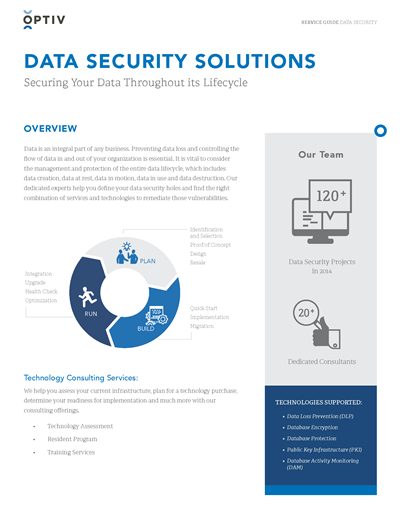Data Destruction Solutions: A Key Element in Your Cyber Security Strategy
The Significance of Effective Data Damage Practices in Shielding Sensitive Details and Ensuring Computer Safety And Security
In an era where information breaches are increasingly usual, the value of efficient data devastation methods can not be overstated. Applying robust data devastation techniques not just alleviates these risks yet likewise aligns with lawful compliance needs, guaranteeing that organizations maintain their credibility and foster customer count on.
Understanding Data Destruction
Comprehending data damage is crucial in today's electronic landscape, where sensitive info can easily be jeopardized. Reliable data devastation involves not simply removing data yet ensuring that data is irretrievable with comprehensive methods. This process is crucial for organizations that manage personal client info, intellectual residential or commercial property, or inner records, as any type of violation can lead to serious economic and reputational effects.
Data destruction includes numerous strategies, including shredding physical media, degaussing magnetic storage space devices, and utilizing software-based options that overwrite information numerous times. Each method serves a details objective and has to straighten with the level of sensitivity of the information being gotten rid of. For example, physical damage is typically favored for hard disk drives having extremely confidential data, while software application techniques could be sufficient for much less sensitive details.
Furthermore, adhering to industry standards and policies, such as the General Information Defense Law (GDPR) or the Wellness Insurance Portability and Liability Act (HIPAA), is imperative for compliance and to mitigate legal threats. Organizations needs to create a robust information destruction policy, train employees on best practices, and regularly investigate their procedures to ensure that all delicate info is gotten rid of securely and properly.
Dangers of Inadequate Practices
Inadequate information damage practices reveal organizations to substantial dangers that can have far-reaching effects. When sensitive details is not correctly dealt with, it continues to be susceptible to unapproved gain access to, which can lead to data violations and identity burglary. Such events not only compromise the safety and security of individuals yet also stain the organization's track record, resulting in a loss of client trust and prospective economic repercussions.
In addition, regulatory compliance is significantly strict in lots of industries. Failure to stick to information destruction guidelines can cause significant penalties and lawful actions against organizations. These fines can stress financial resources and draw away interest from core business procedures.
In enhancement, the abuse of residual data can cause copyright burglary or corporate espionage, jeopardizing competitive advantages (data destruction). The influence of poor data destruction prolongs beyond instant monetary losses; it can also result in long-term damage to brand stability and market setting

Organizations should acknowledge that information protection is not only concerning preventing breaches; it also encompasses the responsible management of information throughout its lifecycle. Neglecting efficient data destruction methods can have tragic effects, emphasizing the need for durable procedures to alleviate these dangers.
Best Practices for Data Devastation
Applying reliable data destruction practices is essential for guarding delicate info and maintaining conformity with governing requirements. Organizations ought to adopt a multi-faceted strategy to make sure that data is irretrievable, thereby preventing unapproved gain access to and potential violations.
First, data should be classified based on level of sensitivity, enabling organizations to use proper destruction approaches tailored to the degree of danger. For electronic information, utilizing software-based data-wiping devices that follow sector requirements can effectively overwrite existing information. Physical destruction approaches, such as shredding or degaussing, are important for devices that keep sensitive info, ensuring total eradication.
Developing a clear data retention plan is vital, outlining how much time different kinds of information must be retained prior to destruction. Routine audits of information storage systems are likewise necessary to identify obsolete or unnecessary data requiring elimination.
Additionally, training staff members on the significance of information devastation and the particular procedures to adhere to fosters a culture of safety within the company. Keeping documentation of data damage refines supplies liability and sustains conformity with internal policies and external policies. By sticking to these ideal techniques, companies can significantly mitigate the threats related to information direct exposure.
Legal and Compliance Factors To Consider

Failing to adhere to these guidelines Discover More Here can result in serious fines, consisting of considerable penalties and reputational damages. Organizations should carry out a durable data damage plan that straightens with these legal frameworks and supplies clear standards on the proper techniques of information disposal, whether physical shredding or electronic cleaning.
Moreover, preserving documents of information destruction activities is vital for showing conformity during audits or evaluations. By see here now prioritizing lawful and conformity factors to consider, companies can boost their information security position and foster count on with stakeholders and customers, eventually adding to an extra secure data management setting.
Advantages of Effective Information Devastation
Reliable information damage methods prolong past simple compliance; they provide considerable advantages to organizations that prioritize them. By guaranteeing that delicate info is irretrievably ruined, organizations reduce the risk of data breaches and the prospective monetary effects connected with them. This positive technique not just safeguards against unauthorized access yet additionally boosts the general credibility of the organization in the eyes of stakeholders and customers.
Applying robust information devastation methods, such as physical devastation of storage space tools or innovative data cleaning strategies, contributes to the fortifying of an organization's cybersecurity stance. data destruction. It lowers the chance of copyright theft and shields proprietary details, consequently maintaining an one-upmanship out there

Conclusion
To conclude, reliable data destruction methods are crucial for safeguarding sensitive info and improving total computer system safety and security. By executing detailed approaches such as degaussing, shredding, and software application overwriting, companies can alleviate the threats related to unapproved accessibility and information violations. Adherence to governing criteria, consisting of GDPR and HIPAA, additional strengthens compliance and safeguards against legal consequences. Eventually, a dedication to durable data damage techniques fosters a culture of duty, therefore reinforcing a company's cybersecurity pose and preserving client trust fund.
